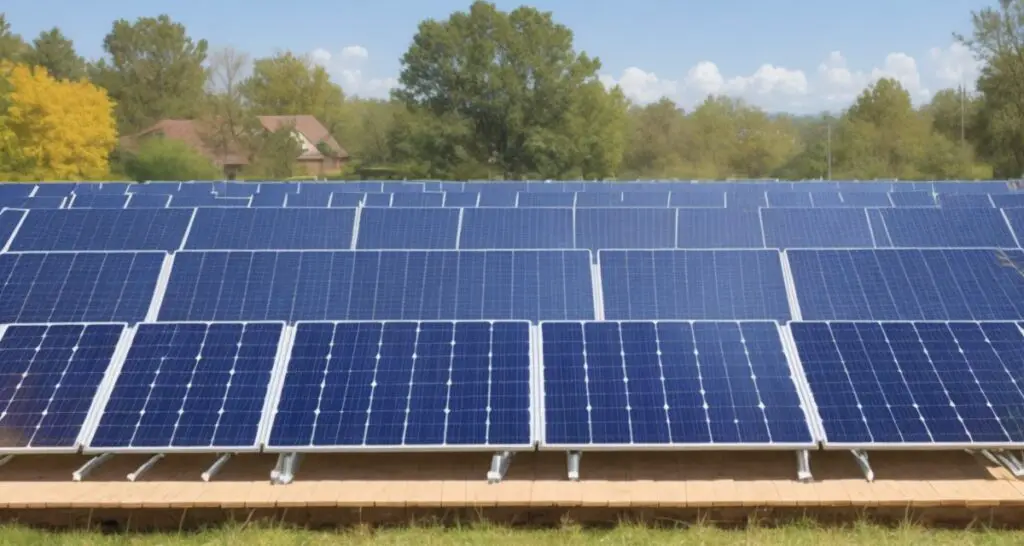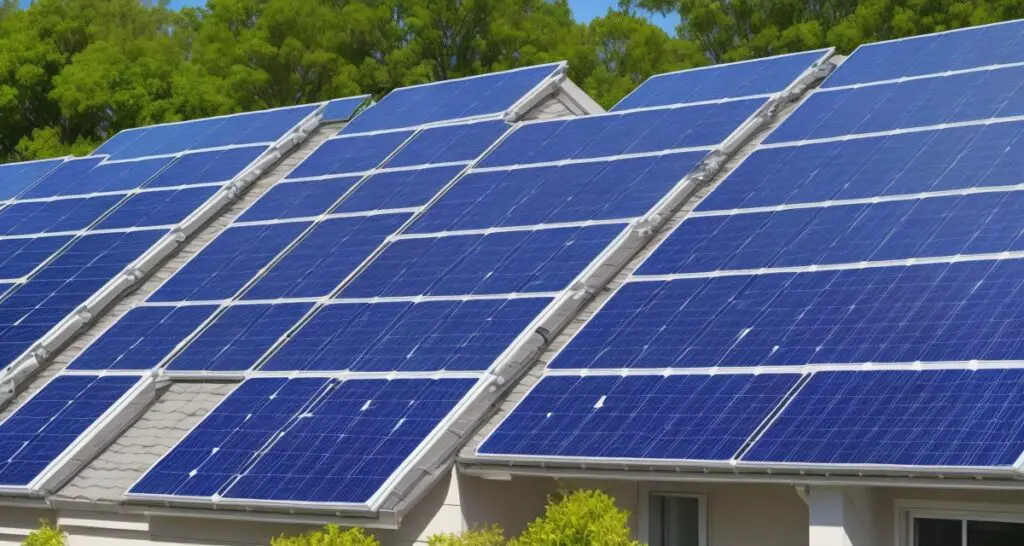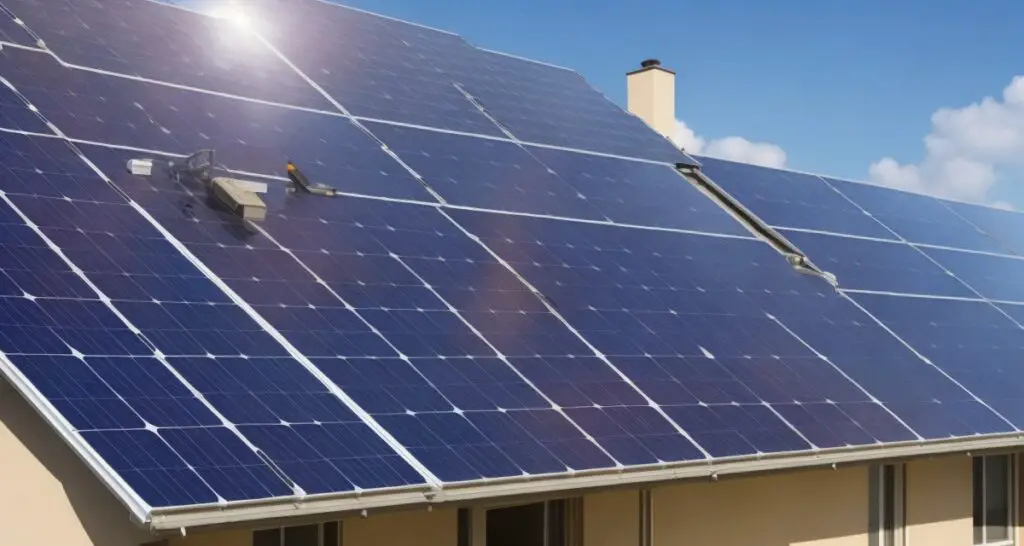Explore the possibility of incorporating solar panels into your household if you’re experiencing elevated utility expenses, reside in a strategically advantageous area, and are eligible for tax incentives or other financial advantages.
The increasing expenses associated with conventional electricity sources, along with government initiatives promoting eco-friendly choices, render the prospect of integrating solar panels into your property increasingly appealing to a multitude of homeowners.
The ultimate financial implications of solar panels always raise a question think about “how much does it cost to install solar panels?” and their potential to generate savings hinges on several pivotal aspects.
Average solar panel cost by state

The average cost for a 6-kilowatt (kW) solar system (following federal tax credits) typically amounts to $11,810, but it’s essential to recognize that costs can fluctuate significantly depending on your geographical location. Various factors, such as labor rates, local incentives, the quality of solar equipment, and more, play a role in determining these expenses. Your total expenditure may range anywhere from $10,000 to $30,000 or possibly more, contingent on your roof’s size and your energy requirements.
The national mean cost for solar panel installation, prior to factoring in the 30% federal solar investment tax credit (ITC), is approximately $23,879 according to information from EcoWatch. Once you apply for this tax credit, the final cost drops to around $16,715.
It’s worth considering the diverse costs for solar installations in different states, along with the accompanying system sizes, cost after ITC, payback periods, and estimated net savings:
Alabama:
The average cost per watt is $2.45, with an 11.5 kW system resulting in a cost of $19,723. The payback period is roughly 11 years, and the estimated net savings are approximately $28,590.
Alaska: With a cost per watt of $2.41, a 6 kW system costs about $10,122. It offers a payback period of around 7 years and estimated net savings of about $34,500.
Arizona:
The cost per watt is $2.61, leading to a total cost of $21,011 for an 11.5 kW system. The payback period extends to approximately 12 years, with estimated net savings of around $23,891.
Arkansas:
For this state, the cost per watt is $2.54, and an 11 kW system translates to a cost of $19,558. The payback period is approximately 13 years, with estimated net savings of about $15,567.
California:
With a cost per watt of $2.73, a 4.5 kW system totals around $11,466. The payback period extends to roughly 8 years, and the estimated net savings are approximately $30,000.
Colorado:
The cost per watt in Colorado is $2.69, resulting in a cost of $14,123 for a 7.5 kW system. The payback period is approximately 12 years, with estimated net savings of about $14,479.
Connecticut:
In Connecticut, the cost per watt is $2.80, and a 7.5 kW system costs approximately $14,700. The payback period is around 8 years, with estimated net savings of about $42,705.
Delaware:
With a cost per watt of $2.58, a 9.5 kW system amounts to $17,157. The payback period extends to approximately 12 years, with estimated net savings of around $29,016.
Florida:
The cost per watt in Florida is $2.53, and an 11.5 kW system results in a cost of $20,367. The payback period is approximately 12 years, with estimated net savings of about $21,500.
Georgia:
For this state, the cost per watt is $2.55, and an 11 kW system translates to a cost of $19,635. The payback period extends to roughly 12 years, with estimated net savings of about $23,182.
Hawaii:
With a cost per watt of $2.67, a 5.5 kW system costs around $10,280. It offers a payback period of about 6 years and estimated net savings of about $49,459.
Idaho:
The cost per watt in Idaho is $2.60, resulting in a cost of $18,200 for a 10 kW system. The payback period is approximately 14 years, with estimated net savings of about $11,478.
Illinois:
In Illinois, the cost per watt is $2.73, and a 7.5 kW system totals approximately $14,333. The payback period extends to around 12 years, with estimated net savings of about $16,585.
Indiana:
With a cost per watt of $2.68, a 9.5 kW system amounts to $17,822. The payback period is approximately 12 years, with estimated net savings of about $21,994.
Iowa:
The cost per watt in Iowa is $2.77, and a 9 kW system costs about $17,451. The payback period extends to approximately 12 years, with estimated net savings of about $17,572.
This comprehensive data showcases the varying costs and potential savings associated with solar panel installations in different states, enabling you to make an informed decision tailored to your specific circumstances.
Is this conversation helpful so far?
How much does it cost to install solar panels?

Many solar installers determine their pricing based on the system’s wattage, typically ranging from $2.50 to $5 per watt. The cost per watt signifies the expense for each unit of energy the solar panel system can generate. To illustrate, if you’re considering a 5-kilowatt (5,000-watt) system at $3 per watt, the total cost would amount to $15,000 (5,000 watts x $3 per watt).
As an example, a customer, Brad from California, received a quote for nearly $26,000 for a 5-kW system, equating to approximately $5.20 per watt.
Brad expressed, “For a 4.97-kW system, I anticipated a price range between $13,071 and $17,047. In my personal estimation, a 4.97-kW system should cost around $13,668 ($2.75 per watt).”
If you’re only in need of a handful of panels for a smaller do-it-yourself project, anticipate costs of approximately $200 to $350 per panel, which equates to around 80 cents to $1.40 per watt. It’s worthwhile to obtain multiple quotes for any system size, as even a small difference, such as $3 to $4 per watt, can accumulate to substantial savings over time.
Solar panel installation cost breakdown
The number of panels required for your home’s solar system installation is influenced by your specific energy requirements, which subsequently impact the overall cost. Factors like your local climate and the extent of sunlight in your region contribute to the final expenses of the installation.
How much do solar panels save?
Transitioning to a home solar system has the potential to significantly reduce your energy expenses, with potential savings reaching up to 75%. It’s important to note that the actual savings you experience will vary, contingent upon factors such as your current electricity rates, local climate conditions, and your individual energy requirements.
We’ve had the opportunity to converse with numerous solar energy customers, like Brandie in Texas, who shared that their “electricity bill reduced significantly. Even when considering the cost of the solar panels and our electricity consumption, it remains notably more affordable than our previous bills.” Diana in Pennsylvania has mentioned that their electric bills now range between $0 and $10, even during the summer, following their transition to solar energy.
Regarding the timeframe for recouping your initial investment in a solar power system, Wayne Turett, the founder of The Turett Collaborative, a firm specializing in sustainable architectural designs, suggests that it might take approximately seven years or longer. The encouraging aspect is that we anticipate continuous cost reductions in solar hardware, driven by technological advancements and heightened competition in the market.
Other cost factors to consider

Occasionally, some individuals may encounter a situation where their electricity bills experience an uptick due to issues with their solar system. Eunice in Nevada, for instance, found herself in a situation where she wasn’t aware that her inverter needed replacement, resulting in an unexpected surge in her utility expenses.
Eunice shared her experience, stating, “Everything had been going smoothly, and my energy bill had consistently averaged between $13 to $15 per month. However, at the end of September 2022, I received a bill from NV Energy totaling $429.”
It’s essential to keep in mind that ongoing maintenance, encompassing tasks like panel cleaning and, as necessary, repairs, which may fall under warranty, contributes to the overall cost. Many solar energy companies provide monitoring applications that offer insights into your system’s energy production and can alert you to when maintenance might be necessary, ensuring your solar investment remains cost-effective and trouble-free.
How can I pay for solar panels?
Much like the process of acquiring a new car, paying for solar panels upfront is an option, but it’s important to note that the majority of individuals choose alternative payment methods.
Homeowners and business proprietors frequently explore avenues such as loans, solar leases, or power purchase agreements (PPAs) to manage or spread the cost of solar panel installations. You may want to consider options like a cash-out refinance or a Home Equity Line of Credit (HELOC).
Cash Payment:
If you have the financial means to pay for your solar panels in a lump sum, this typically results in long-term cost savings. For instance, let’s take a moment to consider David’s experience in California: “The financing option was priced at $18,000,” he shared. “However, by paying in cash, the cost dropped to $15,000, and as a bonus, I received a $1,000 debit card. Ultimately, it only amounted to $14,000. I am completely satisfied with this choice. It’s been six months, and I haven’t had to pay an electric bill. I wholeheartedly recommend it to anyone.”
Solar Loan:
Solar loans, in general, operate much like conventional loans. They involve an application and approval process, and you repay the loan amount over time in manageable installments. Whether this option is suitable for you hinges on the specific terms and your break-even point.
Christian, a solar customer from California, provides valuable insight: “I crunched the numbers, and everything checked out. Instead of facing monthly electric bills of $100 or $200, if I maintain or decrease my energy usage, I’ll only be covering the financing, which stands at $150. What’s more, this commitment only extends for six years, after which the panels will be mine, and I won’t have any further payments.”
It’s crucial to be mindful of the interest rate when considering a solar loan. Another reviewer in California mentioned, “I’m actually paying more for the loan than I’m saving on my utility bills. The interest payments alone amount to over $1,000 per year, and this is expected to persist for a significant duration.”
Solar Lease:
With a solar lease, you don’t assume ownership of the equipment. Instead, you make regular monthly payments for the utilization of the solar energy system over the lease’s duration. The leasing company assumes responsibility for maintaining and servicing the solar panel system throughout this period.
Dan, a solar power customer in California, opted for a lease and shared his experience: “We chose the lease option instead of a purchase, which meant we didn’t have to make any upfront payments—literally zero. I work in finance and accounting, and I’m typically cautious about deals that seem too good to be true. However, in this case, it has genuinely exceeded our expectations.”
At the Of the lease term, you typically have several choices, including renewing the lease, purchasing the system at its fair market value, or having the leasing company remove the system from your property.
It’s important to remember that there are various avenues to explore when it comes to financing your solar panel installation, each with its unique benefits and considerations. Make sure to evaluate these options in light of your specific circumstances and preferences.
Your decision to embrace solar energy not only presents immediate financial benefits but also aligns with the growing trend of sustainable and environmentally responsible energy sources. This transition is indeed a positive step toward a more eco-conscious and cost-effective energy future.
Power purchase agreement

A Power Purchase Agreement (PPA) offers an alternative avenue for having solar panels installed on your property without the immediate financial outlay.
With a PPA, an Energy Service Company (ESCO) takes on the responsibility of installing and maintaining the solar panels. As the property owner, you enter into an agreement to purchase the electricity generated by these panels from the ESCO at a predetermined, fixed price.
While a PPA can yield savings on your electricity bills, it’s important to note that a few reviewers have mentioned instances where they felt constrained by the terms of their agreement with the ESCO. It’s advisable to carefully review the terms of any PPA to ensure it aligns with your expectations and financial goals.
FAQS About How Much Does It Cost To Install Solar Panels?
How much does it typically cost to install solar panels for a home?
The cost of installing solar panels for a home can vary widely based on several factors, including the size of the system, your location, and the equipment’s quality. On average, you can expect to pay between $10,000 and $30,000 for a residential installation.
Are there any financial incentives or tax credits available to reduce the cost of solar panel installation?
Yes, many regions offer financial incentives and tax credits to promote solar energy adoption. These incentives can significantly lower the cost of installation. Check with your local and federal government for available programs.
Can I get a more specific estimate for my home’s solar panel installation cost?
To get a personalized estimate, it’s best to consult with local solar installation companies. They can assess your specific needs, your property’s solar potential, and provide an accurate quote tailored to your situation.
How long does it take for a solar panel system to pay for itself through energy savings?
The payback period for a solar panel system varies based on factors like energy consumption, local electricity rates, and system size. On average, it can take anywhere from 5 to 15 years to recoup your initial investment through energy savings.
Are there financing options available to make solar panel installation more affordable?
Yes, many homeowners opt for financing options, such as solar loans or leases, to make the initial cost more manageable. These options allow you to pay for your solar system over time while still enjoying the benefits of reduced electricity bills.
Can I install solar panels myself to save on installation costs?
While it’s technically possible to install solar panels yourself, it’s not recommended for most people. A professional installation ensures safety, system efficiency, and adherence to local regulations. DIY installations can be risky and may void warranties.
What are some tips for reducing the cost of solar panel installation?
To lower the cost of installation, consider getting multiple quotes from different solar companies to find the best deal. Be mindful of your energy consumption, as a smaller system can cost less. Exploring available incentives and tax credits can also contribute to cost savings.
Conclusion
The cost of installing solar panels for a home varies based on factors like system size, location, and incentives. On average, residential installations typically range from $10,000 to $30,000. To get a more precise estimate, consult local solar companies for tailored quotes. It’s also important to explore financial incentives and financing options to make solar panel installation more affordable.
It’s worth noting that the payback period for a solar panel system, during which energy savings cover the initial investment, varies and can take between 5 to 15 years. Ultimately, the decision to install solar panels not only contributes to reducing energy costs but also promotes sustainable and eco-friendly energy use.

